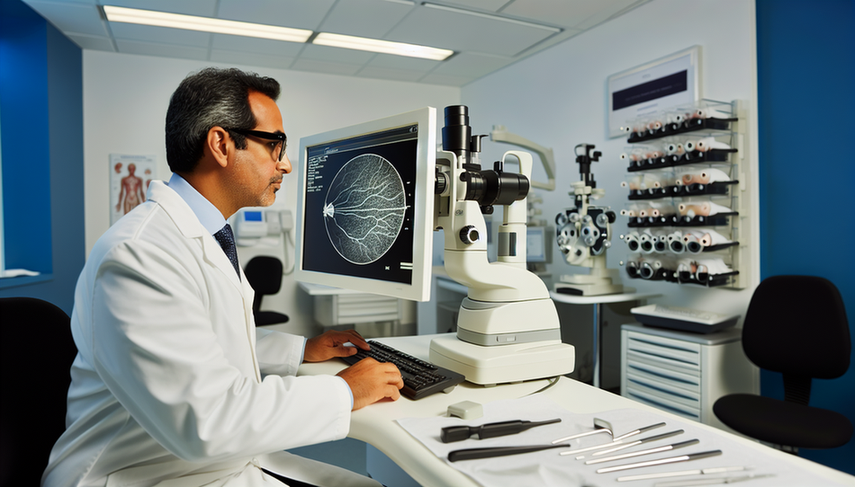AI in Ophthalmology: Automated Systems for Retinal Analysis and Retinopathy Screening

Artificial intelligence (AI) has emerged as a revolutionary tool in the field of ophthalmology, particularly in retinal analysis and retinopathy screening. With the rise of ocular diseases such as diabetic retinopathy, the need for more efficient and accurate detection methods has become crucial. AI-based automated systems are transforming the way diagnosis and monitoring of these conditions are conducted, offering a promising solution to enhance patient care.
In recent years, AI algorithms have been developed that enable autonomous screening of diabetic retinopathy from fundus photographs, achieving sensitivity and specificity comparable to that of human experts. These systems not only facilitate early disease detection but also optimize resources by reducing the workload of healthcare professionals. Furthermore, AI has proven effective in identifying other retinal pathologies, such as diabetic macular edema and age-related macular degeneration, through the use of convolutional neural networks that mimic the object recognition process of the human brain.
The implementation of AI in retinal analysis is not without challenges. The validation of these systems across different populations and their integration with existing healthcare systems are critical aspects that must be addressed to ensure their effectiveness and acceptance. Additionally, it is essential to consider the ethical and legal implications, as well as equity in access to these technologies. Despite these challenges, AI has the potential to revolutionize retinopathy screening, enabling more personalized and efficient care.
In conclusion, AI is redefining the landscape of retinal analysis and retinopathy screening. Advances in automated systems present a unique opportunity to improve the detection and management of ocular diseases, which could translate into better outcomes for patients. However, it is essential to continue researching and developing these technologies to overcome current barriers and maximize their impact in clinical practice.
Referencias
- [1] Artificial Intelligence and Diabetic Retinopathy: AI Framework, Prospective Studies, Head-to-head Validation, and Cost-effectiveness
- [2] Artificial intelligence in retina
- [3] Pivotal Evaluation of an Artificial Intelligence System for Autonomous Detection of Referrable and Vision-Threatening Diabetic Retinopathy
- [4] Diabetic retinopathy screening in the emerging era of artificial intelligence
Created 24/1/2025
